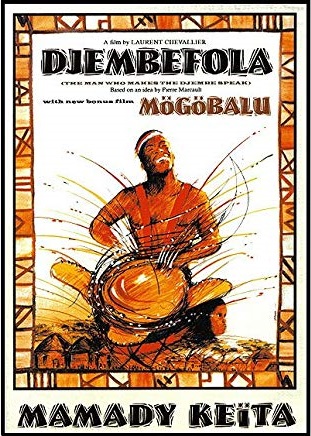
Listening In, Understanding More: The Krin
While some instruments in West Africa are specific to a certain group of people or geographical location, other instruments can be more universal to the region as a whole. The krin drum falls into this latter category. Also known as log or slit drums, variations on this type of drum can be found throughout West […]

Listening In, Understanding More: The Bolon
Shrouded in mysticism, the once-great bolon instrument has now all but completely disappeared from contemporary West African music. Occasionally seen in ballet contexts, it’s hard to grasp the importance of the bolon in carrying messages about conflict, war and peace to various villages in Mali and Guinea. Nevertheless, the bolon is an intriguing instrument, with […]

Listening In, Understanding More: the balafon
When reading articles and stories about new music and sounds, it’s so important to actually do the listening as well as the reading. Otherwise it’s like reading about a sport without ever moving and putting the words into practice – how else are you really supposed to understand how to play the game, or understand […]

Balafon basics: what is it and where did it come from?
This article is about balafon basics, what a balafon is and where it came from. The balafon is a gourd-resonated xylophone, a type of struck idiophone. It is closely associated with the Mandé peoples of West Africa, particularly the Guinean branch of the Mandinka ethnic group, but is now found across West Africa from Guinea […]

Ngoni basics: what is it and where did it come from?
Now, what is that beautiful instrument, the ngoni, exactly and where did it come from? The ngoni or “n’goni” is a string instrument originating in West Africa. Its body is made of wood or calabash with dried animal (often goat) skin head stretched over it. The ngoni, which can produce fast melodies, appears to be […]

Djembe basics: sound and beating technique
A djembefola’s beating technique determines the sound a djembe produces. For its size, the djembe is an unusually loud drum. The volume of the drum rises with increasing skin tension. On a djembe tuned to solo pitch, skilled players can achieve sound pressure of more than 105 dB, about the same volume as a jackhammer. […]

African Dance basics: origin and characteristics
Let’s talk about African dance basics, its origin and its characteristics. African dance refers mainly to the dance of Sub-Saharan Africa, and more appropriately African dances because of the many cultural differences in musical and movement styles. These dances must be viewed in close connection with Sub-Saharan African music traditions and Bantu cultivation of rhythm. […]

Djembe basics: recent history and development
Prior to the 1950s and the decolonization of West Africa, due to the very limited travel of native Africans outside their own ethnic group, the djembe was known only in its original area. National ballets The djembe first came to the attention of audiences outside West Africa with the efforts of Fodéba Keïta, who, in […]

Djembe Basics: general information and origin
A djembe or jembe (/ˈdʒɛmbeɪ/ JEM-bay; from Malinke jembe [dʲẽbe]) is a rope-tuned skin-covered goblet drum played with bare hands, originally from West Africa. According to the Bambara people in Mali, the name of the djembe comes from the saying “Anke djé, anke bé” which translates to “everyone gather together in peace” and defines the […]